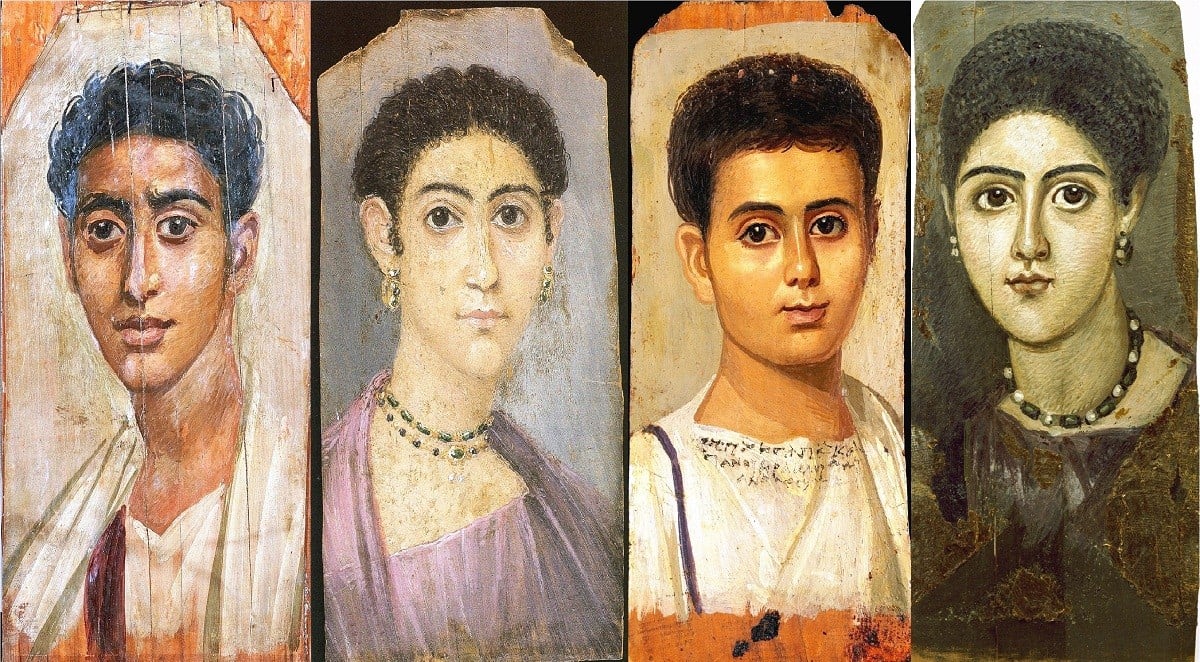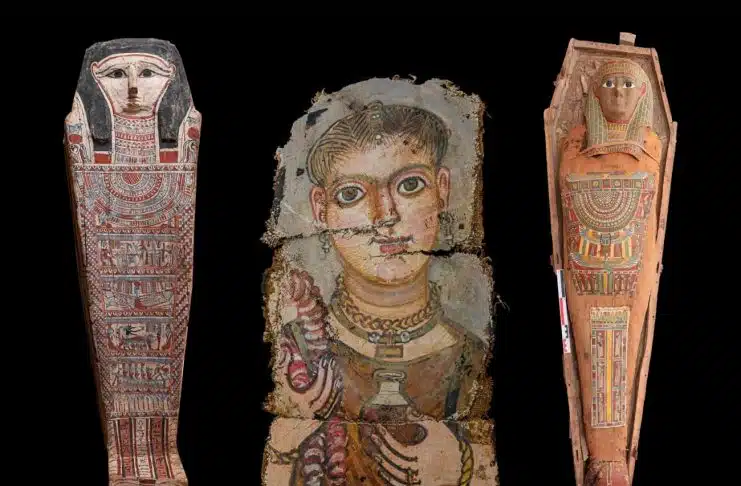
A new exhibition at the Allard Museum in Amsterdam displays Greek mummy portraits discovered in Fayoum, Egypt. These were found in a monumental funerary building dating back to the Ptolemaic and Roman periods.
Having been uncovered in December 2022 at the Garza village archaeological site, it was the first time in 110 years that such a significant discovery was made in the region. The collection of post-Ptolemaic Egyptian funerary paintings is known as “the Fayum portraits.” These are now being shown at the museum in Amsterdam in an exhibition titled Face to Face: The People Behind Mummy Portraits.
Why are Egypt’s mummy portraits from the Ptolemaic-Roman period so rare?
These portraits are believed to be an extremely rare Classical art form. They are unique because they diverge from the typical art, consisting of statues and monuments, produced during Classical antiquity. The portraits have managed to survive all this time as paintings on canvas rather than blocks of stone.
As the frescoes from the ash-covered ruins of Pompeii were preserved by the volcanic eruption, so the Fayum portraits survived as a result of Egypt’s desert climate.
The subject matter of these portraits is also of great interest because, unlike most archaeological discoveries of Greco-Roman artwork which served to immortalize gods, mythological heroes, and godly rulers, these works of art shine a light on ordinary people of the era.
The style of these depictions is also of note with curator Ben van den Bercken suggesting it represents a variety of cultural influences. “They were made to be placed on top of mummified bodies. That’s the Egyptian component: a means of keeping the diseases recognizable for the gods as well as their loved ones,” as reported by Artnet.
Hellenistic stylings, brought to Egypt through the rule of the Ptolemaic pharaohs, whose lineage can be traced back to Alexander the Great, are seen in the clothing of the subjects as well as materials used to mount them onto canvas. Tempera, an Egyptian practice whereby pigment is mixed with water-soluble binders such as egg yolk, is combined with encaustic or hot wax painting, a tradition which Van den Bercken posits may have been taught in Egypt’s Hellenistic schooling systems.
“The interesting thing about encaustic painting is the skill involved,” he said. “Since you cannot make adjustments once the wax has cooled, portraits were constructed layer by layer, giving them an almost Impressionistic quality. It’s reminiscent of what we find in the 17th century with artists like Rembrandt.”

The quality of realism evident in Egypt’s Fayum mummy portraits was also an import, mostly from Rome, which officially annexed Egypt in 30 AD, and indirectly from Greece. Their fine detail demonstrates a considerable understanding and appreciation for human anatomy, which contrasts somewhat with the more abstract and symbolic language associated with Egypt today.
However, it is still debatable whether the portraits were entirely true to life. “It’s difficult to judge the extent to which the paintings reflect what these people actually looked like,” Van den Bercken told Artnet. “If, for instance, they really owned the jewelry we see in the images. It’s possible people were presented a bit wealthier than they actually were.”
It is also worth noting that funeral portraits would have been expensive. “Look at the wood panels on which they were painted. Many of these are made of basswood, which came from outside Egypt. The same goes for some of the pigments.” This, Von den Bercken said, suggests the subjects were members of society’s upper class: men and women of considerable means.
The tradition of funeral painting emerged during the first century BC but gradually died out during the fourth century AD with a possible explanation for the adoption of the practice being the rise of Christianity.
When the religion made its way from Rome to Egypt, mummification rituals gave way to Christian burial ceremonies.
See all the latest news from Greece and the world at Greekreporter.com. Contact our newsroom to report an update or send your story, photos and videos. Follow GR on Google News and subscribe here to our daily email!



